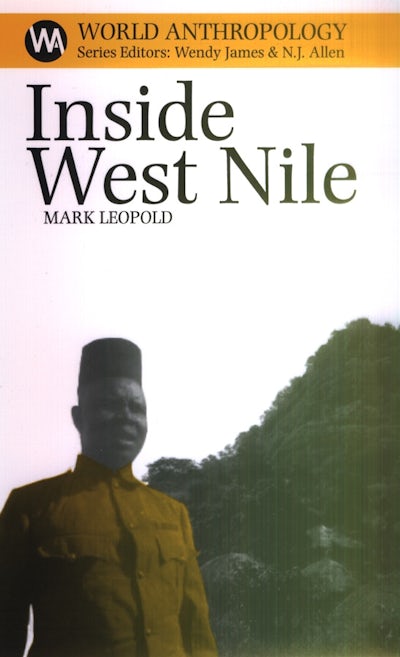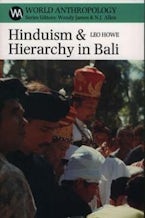
Inside West Nile
Violence, History and Representation on an African Frontier
- Description
- Reviews
This work examines the relationship between violence, narrative and memory in the former West Nile district of Uganda.
West Nile is best known as the home of Uganda's notoriously violent dictator, Idi Amin. But the area's association with violence goes back much further, through the colonial era, when the district was significantly under-developedin comparison with mostof Uganda, and to a pre-colonial past characterised by slave-raiding and ivory poaching.
Drawing on ethnographic fieldwork and archival research in the district capital, Arua town, during the late 1990s, when a low intensity conflict between the government and local rebels became embroiled in wars spilling over from nearby borders with Sudan and Zaire. The author adopts the unconventional approach of moving backwards from the present through successive layers of the past, developing an anthropological critique of the forms of historical representation and their relationship with the human realities of war and violence, in a border area which has long suffered the consequences of being portrayed as a 'heart of darkness'.
The book contributes to current debates in political anthropology on issues such as border areas, the local state, and the nature of the 'post-colonial'. Itwill also be of interest to historians, political scientists, literary and cultural critics, and others working on questions of violence, narrative and memory.
Uganda: Fountain Publishers
Series editors: Wendy James& N.J. Allen
West Nile is best known as the home of Uganda's notoriously violent dictator, Idi Amin. But the area's association with violence goes back much further, through the colonial era, when the district was significantly under-developedin comparison with mostof Uganda, and to a pre-colonial past characterised by slave-raiding and ivory poaching.
Drawing on ethnographic fieldwork and archival research in the district capital, Arua town, during the late 1990s, when a low intensity conflict between the government and local rebels became embroiled in wars spilling over from nearby borders with Sudan and Zaire. The author adopts the unconventional approach of moving backwards from the present through successive layers of the past, developing an anthropological critique of the forms of historical representation and their relationship with the human realities of war and violence, in a border area which has long suffered the consequences of being portrayed as a 'heart of darkness'.
The book contributes to current debates in political anthropology on issues such as border areas, the local state, and the nature of the 'post-colonial'. Itwill also be of interest to historians, political scientists, literary and cultural critics, and others working on questions of violence, narrative and memory.
Uganda: Fountain Publishers
Series editors: Wendy James& N.J. Allen
"Nestled in an obscure corner of Uganda on the Sudan and Congo borders, the sector was once fought over by the Belgians, French, Germans and British. 'Gordon of Khartoum', Henry Morgan Stanley, President Theodore Roosevelt, Idi Amin, and others join a host of lesser-known but equally fascinating figures in this temporal journey that starts in the district's troubled present and moves backward. Along the way the reader first encounters a recent locally produced history, then the idiosyncratic anthropological accounts of the indigenous peoples from the mid-20th century, earlier colonial reports, and 19th-century precontact period reports of rogue European ivory hunters and Arab slavers. The journey ends in the singularly irenic past of indigenous origin myths. This compelling portrait of time and space shows how each era's interlopers misrepresented the local human condition with the importation of the theme of violence as a constant feature of the landscape. This is a brilliant example of anthropological scholarship. -" W. Arens, CHOICE
"One comes away from Inside West Nileknowing a considerable amount, concisely argued, about the ways in which the narratives and imaginings of outsiders have affected the material conditions of the region. Leopold is particularly good in his historiographical analysis. He does an expert job of explaining how notions of brutality and marginality have been confirmed, not only by administrators, but also by the academic literature on the region....As an historical account of the West Nile region, Inside West Nileis impressive, nuanced and polished. -" Ben Jones, CAHIERS D'ETUDES AFRICAINES
"This is a thoughtful, insightful, clearly and engagingly written, and deeply analytical and compelling book. It deserves to be widely read. -" Ronald R Atkinson, JOURNAL OF AFRICAN HISTORY
"I found much that was very thought provoking about Inside West Nile and I can imagine it being a useful text for teaching about the colonial legacy in Africa. -" Tim Allen, AFRICA
Hardcover
9780852559413
April 2005
£65.00 / $95.00








